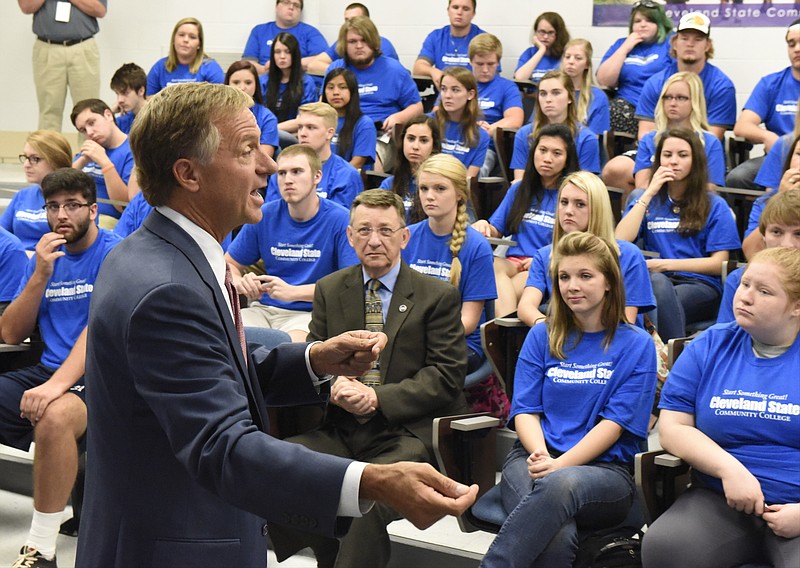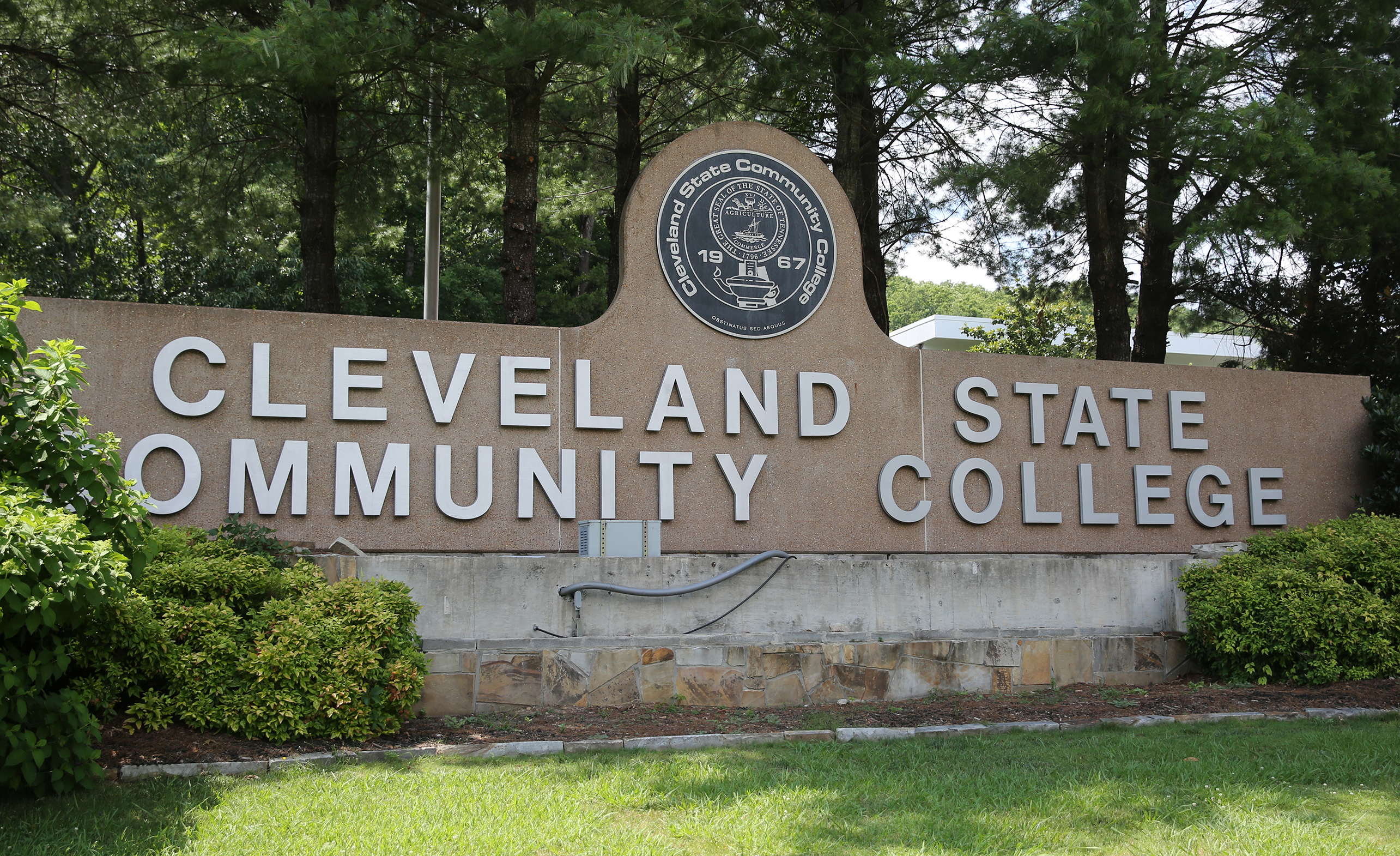Freshman enrollment at UTC
2011: 2,1812012: 2,2812013: 2,3422014: 2,1602015: 1,865Source: UTC
Two years or four?
Of the total number of Hamilton County seniors who go to college, some attend schools offering two years or less, while others attend schools offering a four-year education.Two years or less percentage2005: 42.2 percent2010: 41.3 percent2011: 41 percent2012: 40 percent2013: 43.5 percent2014: 41.5 percent2015: 50.9 percentFour years percentage2005: 57.8 percent2010: 58.7 percent2011: 59 percent2012: 60 percent2013: 56.5 percent2014: 58.5 percent2015: 49.1 percent
For the first time, more Hamilton County students are enrolling in two-year colleges than four-year universities, and other states are looking to Tennessee to see if they can replicate its results.
The surge toward a two-year education marks a big change from the years before the passage in 2014 of Tennessee Promise, the first program of its kind in the U.S., which covers tuition and fees not covered by the Pell grant, the HOPE scholarship, or state student assistance funds.
Of the graduating seniors in Hamilton County who will attend college this year, just over half - 51 percent - are attending two-year schools, while 49 percent are attending four-year schools, according to the Public Education Foundation, which has tracked enrollment rates since 2005.
That's a reversal from the years before the passage of the two-year scholarship, when more than 57 percent of students on average attended four-year universities, while closer to 42 percent of students attended two-year colleges.
Meanwhile, Oregon, Minnesota and a handful of other states have followed Tennessee's lead and more are in the planning stages to launch a similar program, officials said.
"It changes the whole landscape. We really don't know what will happen in the years to come," said Keith White, director of research and effectiveness for the Public Education Foundation.
Officials attribute the shift to students who are following the money when determining what type of education to pursue after high school.
"It's all because of the Tennessee Promise," said Stacey Lightfoot, vice president at the Public Education Foundation. "Governor [Bill] Haslam promoted it well, and it gained national attention, even attracting Barack Obama."
Haslam's bill helps make two years of postsecondary education free for high school seniors at any of the state's 13 community colleges, 27 colleges of applied technology or any eligible institution offering an associate's degree program.
The program is funded by reducing the amount of lottery scholarship money awarded to freshmen and sophomores enrolling at four-year institutions from $4,000 per year to $3,500 per year.
In 2015, as the first wave of Tennessee Promise-funded students started college, the program saw more than 18,700 students fulfill the requirements for the scholarship.
Cleveland State Community College saw a 16 percent increase in the number of freshmen attending classes on the first day.
"This growth comes after four years of decreasing enrollment, so it is clear that Tennessee Promise is making a big difference here at Cleveland State and in our communities," school President Bill Seymour said.
Chattanooga State Community College reported its first-year enrollment for 2015 was about 1,100 compared to about 700 students in 2014.
The money plays a big part in how students select a school, especially for parents, who would be forced to foot the bill if not for the scholarship, Lightfoot said.
"More parents are pushing kids to commit to the Tennessee Promise because it's free," said Lightfoot.
While community colleges were boasting record enrollment, the University of Tennessee at Chattanooga saw its freshman class decrease by 16 percent in 2015, which a spokesman attributed to the Tennessee Promise. However, the school is set to rebound by 200 students, he added.
"Of course, we won't know the final enrollment numbers until after classes have been in session for a few weeks," said Chuck Cantrell, associate vice chancellor of communication at UTC.
UTC intends to overcome the recent decline, in part, by partnering with community colleges to offer dual admission opportunities to students. The move is aimed at allowing students to complete their two-year degree, then "step right onto UTC's campus to finish a four-year degree," Cantrell said.
"We want community college students to look to UTC as the next natural step in their higher educations," he said.
Statistics for Hamilton County Class of 2016 will not be finalized until winter.
Tennessee Promise was signed in law as a part of Haslam's "Drive to 55" initiative, which aims to boost the rate of college graduates in Tennessee from 32 to 55 percent by 2025.
To qualify, students must attend mandatory mentor meetings, maintain a 2.0 grade point average, and complete eight hours of community service per term enrolled.

